Apple's latest iPhones, the iPhone 11 and iPhone 11 Pro, are nearing their release dates on September 20. Apple is separating the new smartphones into its usual low-cost versus high-cost categories, with big differences between the two models coming down to the camera, display, and battery life.
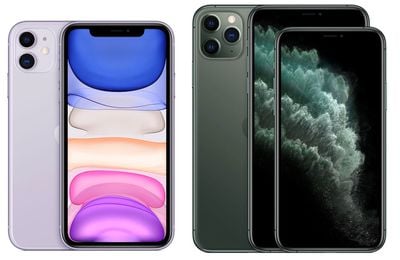
Slight Design Differences
Although they look very similar, the iPhone 11 is made with an aluminum frame and both the front and back are made of glass. The iPhone 11 Pro has the same glass build as the iPhone 11, but with a premium matte finish on the back of the device. Instead of an aluminum frame, its frame is made of stainless steel.
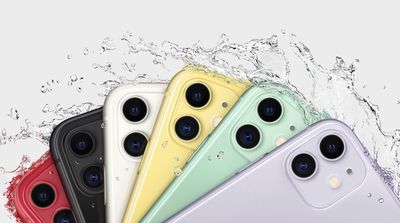
For all three 2019 iPhones, Apple claims that its glass is the "toughest glass found in a smartphone," and promises durability if you happen to drop or otherwise accidentally harm your iPhone. For both smartphones, the square camera bump has a polished glass finish.
The iPhone 11 is 5.94 inches tall, 2.98 inches wide, and 0.33 inches thick, with a weight of 6.84 ounces. The iPhone 11 Pro is ever slightly smaller at 5.67 inches tall, 2.81 inches wide, and 0.32 inches thick, with a weight of 6.63 ounces. Of course, the iPhone 11 Pro Max is the biggest of the bunch at 6.22 inches tall, 3.06 inches wide, and 0.32 inches deep, at a total weight of 7.97 ounces.

The iPhone 11 comes in Purple, Yellow, Green, Black, White, and Product Red. The iPhone 11 Pro comes in Midnight Green, Silver, Space Grey, and Gold. All models have the same front-face notch, bezels, antenna bands, volume and side buttons, mute switch, speaker grills, microphones, and Lightning port.
Display Differences
The iPhone 11 sports a 6.1-inch "Liquid Retina HD" LCD display, while the iPhone 11 Pro family has a sharper "Super Retina XDR" OLED display. While the LCD on the iPhone 11 provides true-to-life colors, the OLED on the iPhone 11 Pro is brighter in sunlight, can display true blacks and more detail in bright areas, and is able to support HDR movies on iTunes.
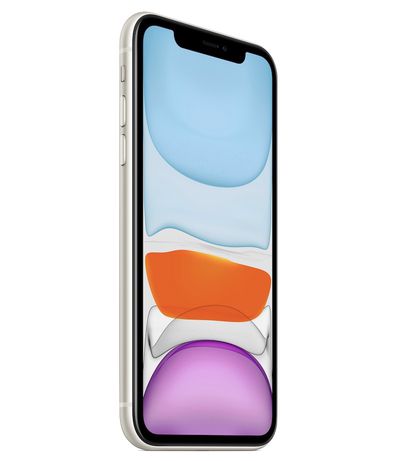
Specifically, the iPhone 11 reaches 625 nits max brightness while the iPhone 11 Pro reaches 800 nits max brightness. Both models support True Tone and Haptic Touch, but neither has support for 3D Touch, which Apple has abandoned this generation. 3D Touch provided pressure-sensitive feedback for shortcuts throughout iOS, and Haptic Touch is the somewhat similar replacement for it, without the hardware-based feedback.
The LCD display is mainly how Apple can keep the cost of the iPhone 11 down in comparison to the iPhone 11 Pro and 11 Pro Max, but it'll be more than sufficient for most users who use their iPhone to casually browse social media apps and stay connected with friends and family through Messages.
Performance Same
Both the iPhone 11 and iPhone 11 Pro are powered by Apple's A13 Bionic chip, which the company claims to be the fastest CPU ever in a smartphone.
In detail, the A13 Bionic features four high-efficiency cores that are up to 20 percent faster and consume 40 percent less power than the A12 Bionic, and two high-performance cores that are up to 20 percent faster and 30 percent more efficient than the previous chip.
Battery Life
This leads to improved battery life on the 2019 iPhones thanks to the more efficient A13 Bionic chip. The iPhone 11 has up to one hour longer battery life than the iPhone XR (its direct predecessor). Based on Apple's internal testing, the iPhone 11 is rated for up to 17 hours of offline video playback, up to 10 hours of streaming video over Wi-Fi, and up to 65 hours of audio playback per charge.
The iPhone 11 Pro has up to four hours longer battery life than the iPhone XS, rated for up to 18 hours of offline video playback, up to 11 hours of streaming video over Wi-Fi, and up to 65 hours of audio playback per charge.
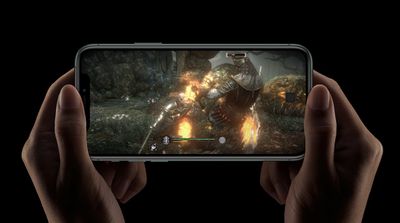
The iPhone 11 Pro Max has the longest battery life in an iPhone to date, lasting up to five hours longer than the iPhone XS Max. It's rated for up to 20 hours of offline video playback, up to 12 hours of streaming video over Wi-Fi, and up to 80 hours of audio playback per charge.
All three models support wireless charging on any Qi-compatible mat, as well as fast charging via 18W or higher USB-C charger and Lightning to USB-C cable. This will net you up to a 50 percent charge in 30 minutes. Notably, the iPhone 11 Pro and 11 Pro Max include an 18W charger and Lightning to USB-C cable in the box, but the iPhone 11 does not include these upgraded accessories and instead comes with the previous 5W charger and Lightning to USB-A cable.
Cameras, the Biggest Difference
Besides the display, the camera is one of the biggest differences between the iPhone 11 and iPhone 11 Pro, but you'll still be getting a solid smartphone camera on either device.
To start, the iPhone 11 has a dual 12-megapixel camera system, with wide (ƒ/1.8 aperture) and ultra wide (ƒ/2.4 aperture) lenses. With ultra wide, you can "zoom out" to 0.5x without physically moving, and capture more of a scene in the process.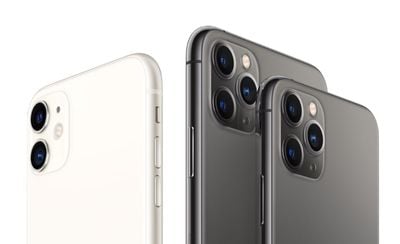
It also supports the new Night Mode for improved low-light images, Auto Adjustments, optical image stabilization, digital zoom up to 5x, 2x optical zoom out, brighter True Tone flash with Slow Sync, Portrait Mode with six effects, and Smart HDR.
Comparatively, the iPhone 11 Pro camera's main difference is found in its third telephoto camera (ƒ/2.0 aperture). This means the 11 Pro family has three total lenses: ultra wide, wide, and telephoto. You'll also get dual optical image stabilization, 2x optical zoom in, 2x optical zoom out, and digital zoom up to 10x.
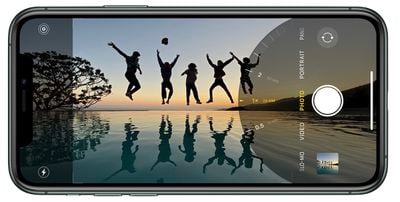
The main advantage of the telephoto lens are that it allows for zooming in on distant subjects without losing much clarity in the image. Apple said that this can be seen when taking images of wildlife from afar, or when you're at a sporting event.
Across the iPhone 11 family of devices, you'll be able to use Apple's "slofies" (aka slow-motion selfies on the front-facing camera); gain access to all six Portrait Lighting effects; and take Portrait Mode photos of humans, objects, and pets.
They also all include Apple's third-generation Neural Engine, enabling next-generation Smart HDR for more natural-looking photos. Later this fall, it will enable a new Deep Fusion system that uses advanced machine learning for pixel-by-pixel processing of photos, including texture, details, and noise.
Connectivity Same
Both the iPhone 11 and iPhone 11 Pro include 802.11ax Wi-Fi and Gigabit-class LTE, meaning that in terms of cellular performance all models of the 2019 iPhone should see similar statistics.
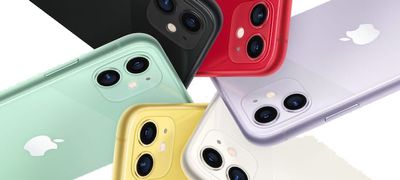
They both include Bluetooth 5.0 support and have NFC readers to support Apple Pay. On the new side of things, Apple has included its in-house designed U1 chip to enable ultra-wideband support for improved spatial awareness.
In a practical sense, this means that iPhone 11 and iPhone 11 Pro can precisely locate other U1-equipped Apple devices. With iOS 13.1, for example, you'll be able to point your iPhone 11 to another iPhone to AirDrop a photo or file.
Storage and Pricing Differences
You can purchase the iPhone 11 in 64GB, 128GB, and 256GB storage capacities, priced at $699, $749, and $849 respectively in the United States.
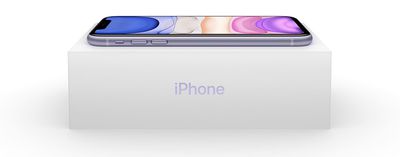
The iPhone 11 Pro is available in 64GB, 256GB, and 512GB, priced at $999, $1,149, and $1,349 respectively in the United States.
Lastly, the iPhone 11 Pro Max is available in 64GB, 256GB, and 512GB, priced at $1,099, $1,249, and $1,449 respectively in the United States.
Tech Specs Compared
Below you'll find tech specs for iPhone 11 and iPhone 11 Pro, with each difference bolded.
iPhone 11
- 6.1-inch LCD display
- Battery lasts up to 1 hour longer than iPhone XR
- 1792×828 resolution and 326 PPI
- True Tone display
- Dual 12-megapixel rear cameras (wide and ultra-wide lenses)
- Single 12-megapixel front camera
- Portrait Mode with Depth Control: humans, pets, and objects
- Six Portrait Lighting effects
- Next-gen Smart HDR
- A13 Bionic chip with third-gen Neural Engine
- Face ID
- Haptic Touch
- Lightning connector
- Fast charging capable: up to 50% charge in 30 minutes
- Qi-based wireless charging
- IP68-rated water resistance to a depth of 2 meters for up to 30 minutes
- 64/128/256GB
- Dual SIM (Nano-SIM and eSIM)
- Gigabit-class LTE
- VoLTE
- 802.11ax Wi‑Fi 6 with MIMO
- Bluetooth 5.0
- Night Mode photos
- Front-facing slo-mo video recording at 120 FPS
- QuickTake video recording shortcut
- Dolby Atmos sound
- U1 chip for spatial awareness
iPhone 11 Pro
- 5.8-inch OLED display
- Battery lasts up to 4 hours longer than iPhone XS
- 2436x1125 resolution and 458 PPI
- True Tone display
- Triple 12-megapixel rear cameras (wide, ultra-wide, and telephoto)
- Single 12-megapixel front camera
- Portrait Mode with Depth Control: humans, pets, and objects
- Six Portrait Lighting effects
- Next-gen Smart HDR
- A13 Bionic chip with third-gen Neural Engine
- Face ID
- Haptic Touch
- Lightning connector
- Fast charging capable: up to 50% charge in 30 minutes
- Qi-based wireless charging
- IP68-rated water resistance to a depth of 4 meters for up to 30 minutes
- 64/256/512GB
- Dual SIM (Nano-SIM and eSIM)
- Gigabit-class LTE
- VoLTE
- 802.11ax Wi‑Fi 6 with MIMO
- Bluetooth 5.0
- Night Mode photos
- Front-facing slo-mo video recording at 120 FPS
- QuickTake video recording shortcut
- Dolby Atmos sound
- U1 chip for spatial awareness
iPhone 11 Pro Max specs identical to 11 Pro, except...
- 6.5-inch OLED display
- Battery lasts up to 5 hours longer than iPhone XS Max (longest battery in an iPhone)
- 2688x1242 resolution and 458 PPI
iPhone 11 vs iPhone 11 Pro: Which One?
Apple continues to offer a nice array of iPhones across the price spectrum for customers, who will have to decide whether the "pro" upgrades are worth the price. At $999 for entry-level pricing, the iPhone 11 Pro has the same great camera of the pricier 11 Pro Max models, along with the OLED display and improved battery life compared to the previous generation.
Still, those advantages might not be worth the $300 upcharge from the entry-level iPhone 11, which still offers a solid camera, Face ID, a True Tone LCD display, and more color options. Because of this, the $699 64GB iPhone 11 will remain a more popular option among most 2019 iPhone buyers.
























